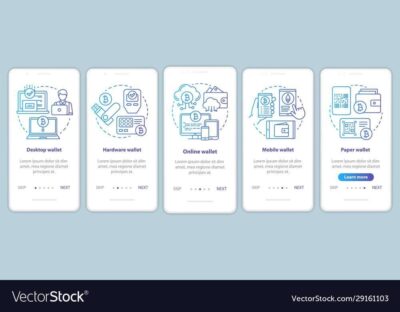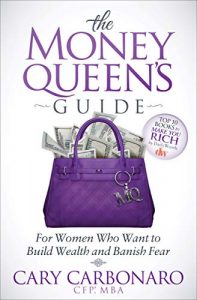Before 1975, if you wanted to buy the 500 stocks in the S&P 500, you would have had to buy each stock individually. Vanguard founder John Bogle introduced the first-ever index fund in that pivotal year, which tracked the S&P 500. A properly suggested portfolio recommendation is dependent upon current and accurate financial and risk profiles. First and foremost, you’d have to shell out a lot of cash to complete a full set of the stocks that make up the S&P 500. To buy one share of just 10 of the largest companies in the S&P 500, for instance, it could cost you more than $8,000.

Have advocated for this being the primary investment that you need. Index funds and ETFs are similar, but there are minor differences. Meaning, you’d essentially hold the stock of every single company within the S&P 500. The Annuity Expert is anonline insurance agency servicing consumers across the United States. My goal is to help you take the guesswork out of retirement planning or find the best insurance coverage at the cheapest rates for you.
Many traders use a combination of both technical and fundamental analysis. Investing in the S&P 500 is a simple and low-effort way to invest your money. It does neither require much knowledge about the financial markets, nor the overall economy nor individual companies. As such S&P 500 trackers are well suited for investors wanting to participate in the overall long term economic growth without having to do research on their own.
Exchange traded funds are baskets of securities that trade intraday like individual stocks on an exchange, and are typically designed to track an underlying index. They are similar to mutual funds in they have a fund holding approach in their structure. That means they have numerous holdings, sort of like a mini-portfolio.
The S&P 500 represents only about 40% of the global stock market. This means that by investing in the S&P 500, you leave aside returns from many other companies around the world. For instance, countries like China or Brazil have the potential to grow significantly over the next decades. Individual investors have to go through a broker to buy ETFs on the exchange. There is no capital gains tax for stocks in Belgium, but there is a tax on dividends. If you choose a distributive version of the ETF, you are liable to pay a 30% tax on all dividends.
Alternatives to the S&P 500
Many of the companies you interact with on an everyday basis are in the S&P 500, like Home Depot, Exxon Mobil, Mastercard and Coca-Cola. Some companies have more than one type of stock offered and included in the index, which is why you may see the designations “Class A” and “Class B.” The index covers a broad range of sectors, including consumer staples, financials, technology and health care.
So if you are looking for a way to invest in the S&P 500 without losing money, an FIA may be right for you. In addition, fixed index annuities offer tax-deferred growth and a guaranteed income stream in retirement. Early access What Is LexaTrade and How to Use it to direct deposit funds depends on when the payor sends the payment file. We generally make these funds available on the day the payment file is received, which may be up to 2 days earlier than the scheduled payment date.
The nature of the stock market is unpredictable, but experts often recommend investing in index funds that track broad market benchmarks, like the S&P 500. Like index funds, passively managed ETFs Defining Williams %R indicator aim to duplicate the performance of a market index like the S&P 500. Managers purchase a basket of securities to duplicate the benchmark index’s holdings and then sell shares to investors.
The industry average OER is a straight average of all index ETFs assigned to the Morningstar Institutional Category. Schwab Asset Management also holds $340.8 billion in Schwab index mutual funds and Schwab ETF assets under management. By definition, index funds aim simply to track their benchmark indexes before fees and expenses.
- The fee structure for when you buy the index fund will vary based on the platform that you use, but no-fee trading has become more popular and is now the norm among online trading platforms.
- However, With an index annuity, you don’t have to worry about the ups and downs of the stock market because you lock in all gains with protection from market downturns.
- Next, do a search with your broker to find the fund you want.
- When evaluating offers, please review the financial institution’s Terms and Conditions.
- The S&P 500 is a widely followed index, and many investors use it as a barometer for the stock market’s performance.
Learning how to invest in the S&P 500 is an important step for any investor, new or experienced. As a proxy for the whole U.S. equity market, understanding how to navigate the country’s most popular index gives investors valuable insight into the broader market and economy. There are pros and cons to buying the S&P 500 via exchange-traded funds or another type of index fund. The Dow Jones Industrial Average is another stock market index that is closely followed by investors and analysts. If you want to invest in the S&P 500, you’ll first need a brokerage account.
Our Services
Nonetheless, the S&P 500 has historically increased over long periods of time. Investors who partake in the index now will most likely be happy they got in earlier than later. The Dow Jones Industrial Average, which is made up of 30 stocks, and the Nasdaq 100 Index, which is made up of 100 stocks, are also common benchmarks. But the S&P is seen as a more full picture of the stock market because it includes stocks from such a wide variety of industries. The S&P 500 is commonly used as a benchmark to measure the U.S. stock market performance overall.

If you’re an investment professional,learn more about Schwab funds. Index mutual funds and ETFs tend to have low turnover—meaning they buy and sell securities less frequently—potentially generating fewer capital gains. IVV has been around for a while and is very cheap (0.03% expense ratio).
The S&P 500’s average annual returns over the past decade have come in at around 14.4%, as of early 2022. Buying a single share of an S&P 500 index fund will give you exposure to 500 companies, immediately diversifying your portfolio. Trade stocks and ETFs commission-free, plus gain access to alternative investments like art, NFTs and more. Buy your desired number of shares with a market order or use a limit order to delay your purchase until the stock reaches a desired price. Investing in the S&P 500 allows for a hands-off investment approach and daily monitoring is not necessary.
What is the S&P 500 index?
Once you decide between ETFs and mutual funds, you can start comparing more specific details to pick your favorite fund. You don’t want to overpay when you can get essentially the same thing from multiple sources. Invest, an individual investment account which invests in a portfolio of ETFs recommended to clients Investment Analysis for beginners based on their investment objectives, time horizon, and risk tolerance. This is why both financial advisors recommend that you buy funds that track the S&P 500 and provide one-stop shopping for those looking to invest in the index. The best brokers offer thousands of ETFs and mutual funds without a trading fee.

And a smart approach to that is index investing, which provides two important advantages – diversification and minimizing costs. In the stock market, you’ll find an abundance of “indexes” — which are basically a fund that tracks a particular type of stock, sector, company, etc. So, in the case of the S&P 500, it follows the 500 largest publicly traded companies. If you’re new to investing, it can be difficult to know where to start. Fortunately, there are plenty of advisory or brokerage services that can help you get started.
First, the DOW tracks a significantly smaller selection of stocks — only 30 of the largest U.S. companies are included. It also excludes the utilities and transportation sectors, whereas the S&P 500 includes all sectors. This means that DJIA-tracking funds provide less diversification than S&P 500 index funds. A committee meets to choose the stocks in the index, and they don’t necessarily have to be the biggest 500 companies.
Setting up an account
The less you’re able to invest, the more important it is to find a broker that offers you low fees, because that’s money that could otherwise go into your investments. You don’t have to be wealthy to begin investing, but you should have a plan. And that plan begins with figuring out how much you’re able to invest. You’ll want to add money regularly to the account and aim to hold it there for at least three to five years to allow the market enough time to rise and recover from any major downturns.
This site may be compensated through the bank advertiser Affiliate Program. If you want to be a hands-off investor, consider a robo-advisor. Here’s what you need to know to invest and buy shares in the S&P 500 Index. Diversification does not eliminate the risk of experiencing investment losses. With thinkorswim, you’ll have tools to help you build a strategy and more. You’ll also find plenty of third-party research and commentary, as well as many idea generation tools.
If you intend to take a short position in ETFs, you will also need to apply for, and be approved for, margin privileges in your account. Finder.com is an independent comparison platform and information service that aims to provide you with information to help you make better decisions. We may receive payment from our affiliates for featured placement of their products or services. We may also receive payment if you click on certain links posted on our site. After paying off $30,000 in debt in a little more than a year, he applied what he learned as a writer at FinanceBuzz, where he specialized in finance news, banking, debt and travel. He has been featured on MSN, Best Company, Money Done Right and Recruiter.
Buy a single share or multiple shares of the fund via your investing account. While traditional mutual funds tend to have minimum investments, an ETF’s minimum is simply the cost of a single share (or a part of a share, if you’re buying fractional shares). For example, the Vanguard 500 Index Fund Admiral has a minimum investment of $3,000, but the Vanguard S&P 500 ETF can be bought with the price of just one share. They typically aim to deliver returns that match the overall market or a certain part of it, like small-cap or real estate stocks. The price constantly changes throughout the day as traders buy and sell. Most major discount brokerage firms allow you to trade all ETFs free.
Certain ETFs purchased will not be immediately marginable at TD Ameritrade through the first 30 days from settlement. For the purposes of calculation the day of settlement is considered Day 1. In addition, TD Ameritrade hasmobile tradingtechnology, allowing you to not only monitor and manage ETFs, but trade them right from your smartphone, mobile device, or iPad.
The S&P 500 Index (Standard & Poor’s 500 Index) is a market-capitalization-weighted index of the 500 largest publicly traded companies in the U.S. S&P 500 index ETFs and mutual funds pay dividends to the constituent companies. The difference in fees between S&P 500 index funds and ETFs these days is marginal.
